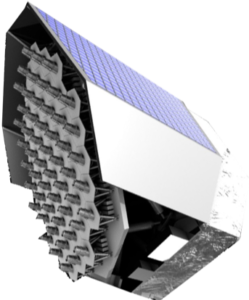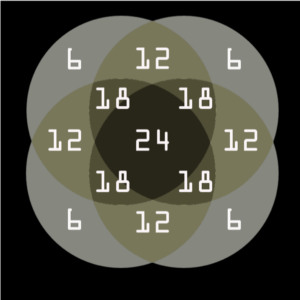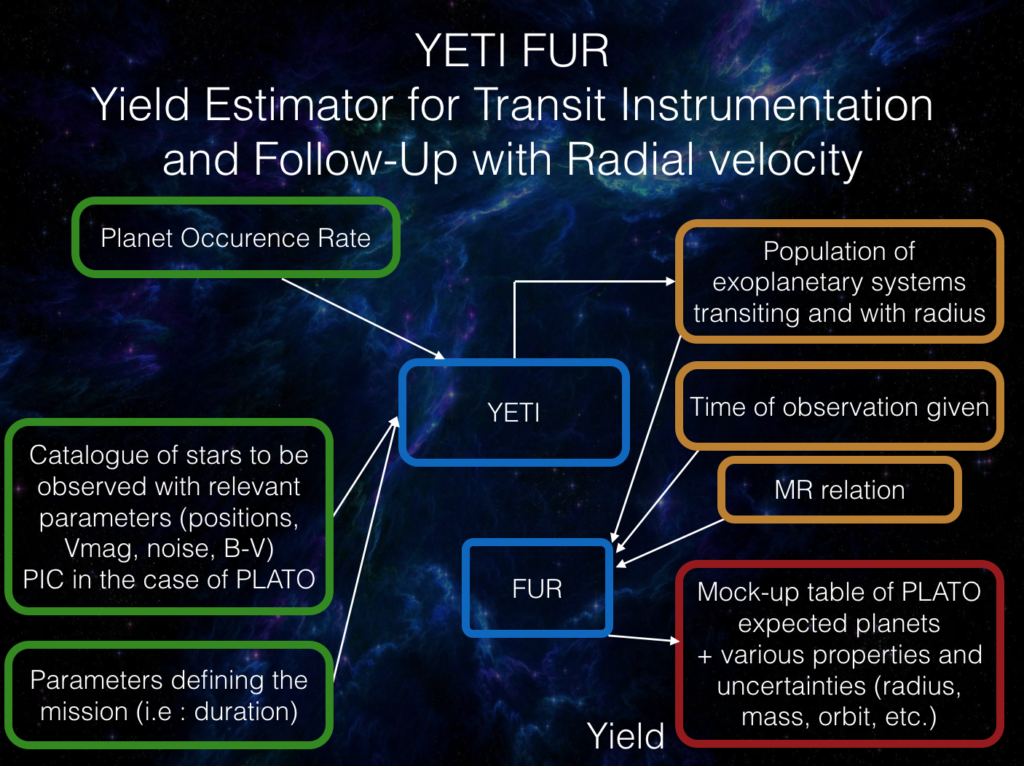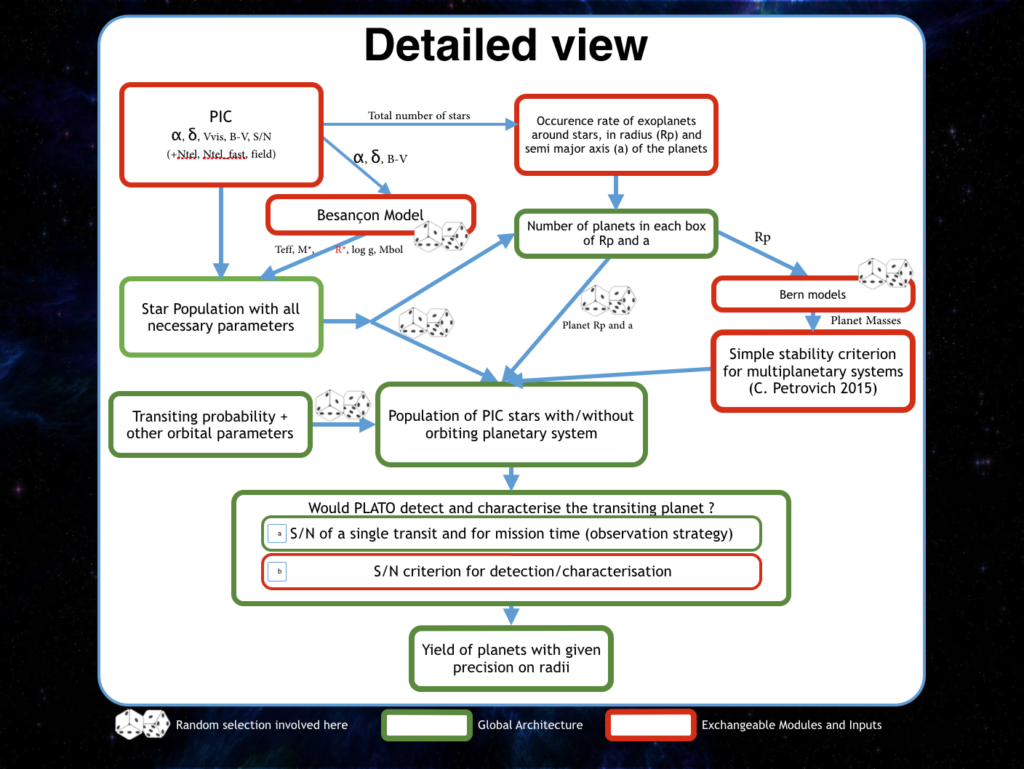I am currently finishing PhD studies in astrophysics, on the thematic of exoplanets. This thesis is done in the frame of the NCCR PlanetS, and is a shared position between Geneva and Bern universities, under the supervision of Stéphane Udry and Yann Alibert.
My current research project is to estimate the yield of the future satellite PLATO, not only how much exoplanets will it find, but also which precision will be reached for the characterisation of their radius and mass, and with how much time of telescope for the follow-up.
PLATO
PLATO stands for PLAnetary Transits and Oscillations of stars. It is the third M-class mission of ESA, the European Space Agency, to be launched in 2026-2027. After 20 years of research in exoplanets, we now have determined density and bulk composition of many exoplanets. However, less than ten of those exoplanets are orbiting their host stars with a period longer than 80 days. PLATO aims to fill that gap.
There are two mains goals for the satellite. The first one is to detect Earth-sized exoplanets, up to the habitable zone, around solar-type stars. Characterisation is the second key word of the mission, as the bulk properties of the planets are required to assess their habitability. As such, the goal of PLATO is to achieve the following:
- Planet detection and radius determination (3% precision) from photometric transit
- Determination of planet masses (better than 10% precision) from ground-based radial velocity follow-up
- Determination of accurate stellar masses, radii, and ages (10% precision) from asteroseismology
- Identification of bright targets for atmospheric spectroscopy.
The design of PLATO is quite unique. It is composed of 24 telescopes (+ 2 fast ones), set in 4 groups of 6. Each group observe a different field of view, overlapping with the others so that part of the total field of view are observed by 6, 12, 18 and 24 telescopes. This design has been chosen to optimise the number of suitable targets for asteroseismology.
The nominal mission is to observe 2 fields of view (each being ~24 bigger than Kepler), one in the north hemisphere and the other in the south hemisphere. Each field will be observed during 2 years, with high cadence (25 secondes) for every star of the P1 sample (Vmag >11 for ground-based follow-up, and 34ppm/sqrt(h) for asteroseismology). A step-and-stare phase with 2 to 5 months per field of view, in order to cover up to 50% of the sky, could be added after the two long-pointings.
To know more about PLATO:
YETI FUR
In order to estimation the yield of PLATO, both in terms of detection and characterisation (including follow-up), I developed the YETI FUR code, standing for Yield Estimation for Transit Instrumentation and Follow-Up in Radial velocity. It is a fast code, running on a single personal computer, and with high modularity to enable to customise it for other missions, and study the impact of various parameters (mission duration, exoplanet occurence rates, etc.) on the yield.
Here is a brief overview of how it works. It takes a catalog of stars as primary input (the PLATO Input Catalog – PIC, in this case), and parameters concerning the mission, plus optional occurrence rates for exoplanets, and create a synthetic population of multi-planetary systems around the stars from the input catalog. Then thanks to a Mass-Radius relationship and a follow-up strategy, it outputs a mock-up table of the stars, their planets, their parameters and how well it is characterised by the satellite and the follow-up.
Here is a close-up view of how the synthetic population of planets is constructed, highlighting some of the modular features.
This work will be soon detailed in a publication (in prep.).



